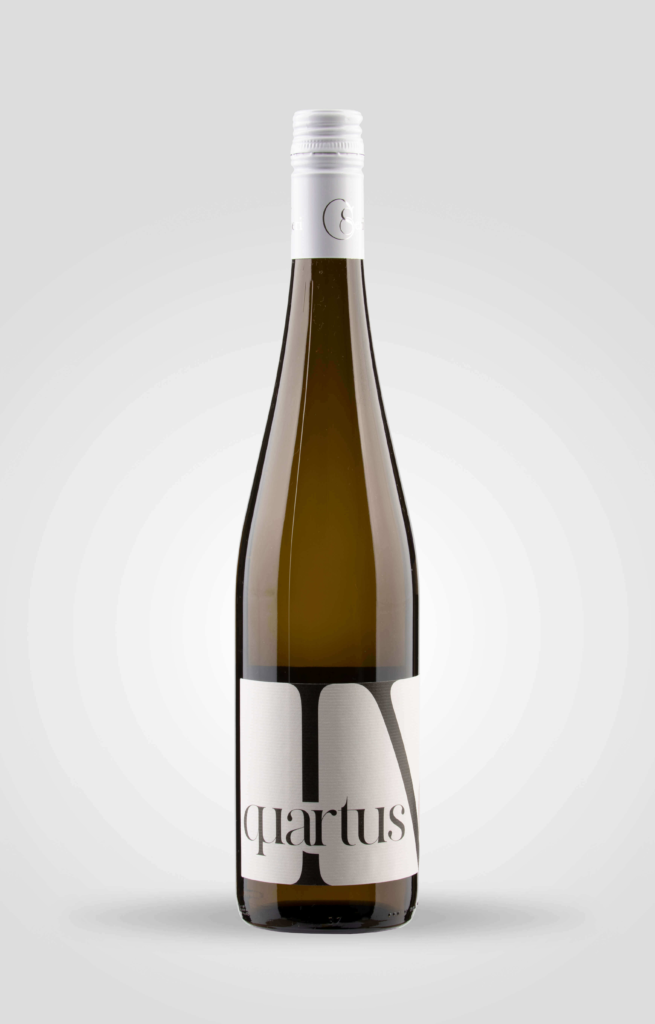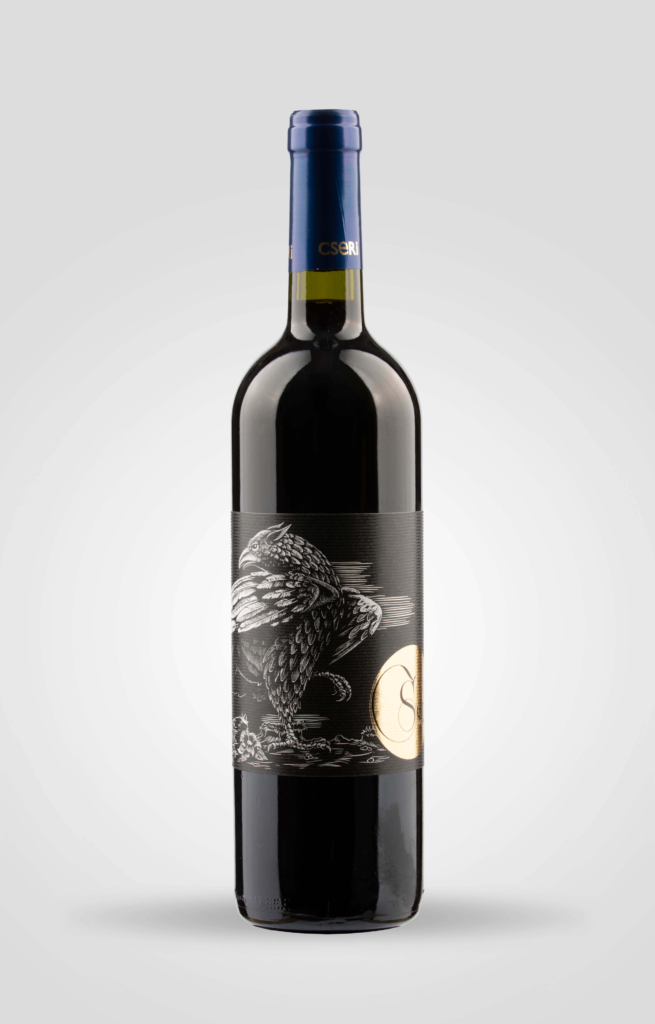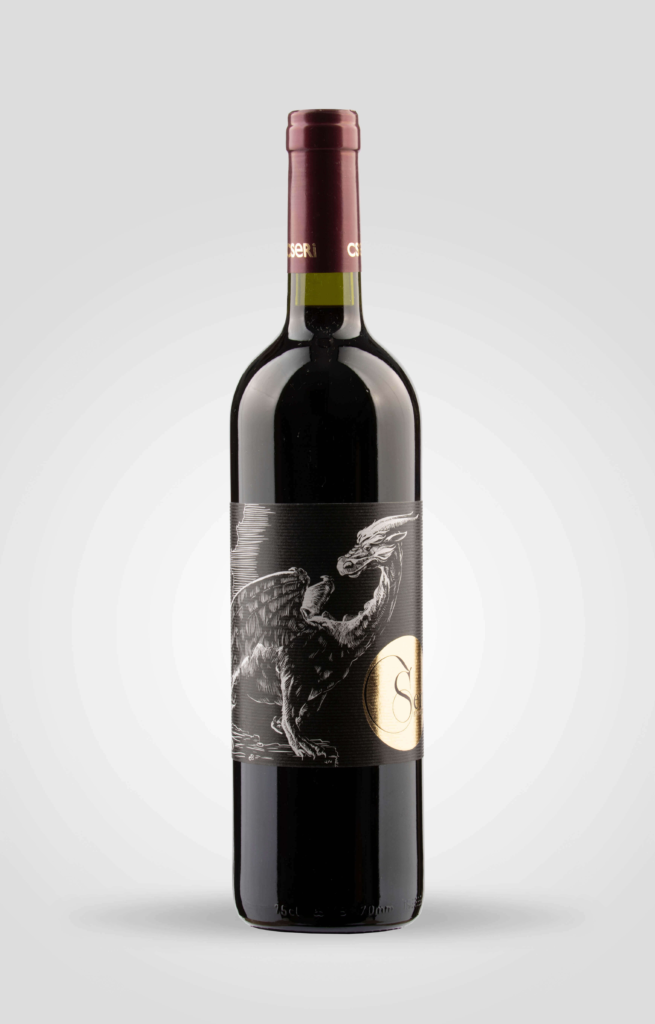Cseri Winery
Pannonhalma Region
The Cseri family’s winery is located in Pannonhalma, a lesser-known, but up-and-coming region in northwestern Hungary. The region is Hungary’s smallest, with less than 1,500 acres of vineyards. It is best known for its Benedictine archabbey, founded in 996. The Medieval building sits atop of a hill, commanding the landscape when you drive into the area. Most people solely associate Pannonhalma wine with the renowned winery located within the abbey. The Cseri family founded its winery in 2012 after Norbert Cseri spent many years as head winemaker at the abbey. They are one of the few families in the region who sell their wine commercially. The Cseri family produces a variety of wines, but are especially passionate about Rhine Riesling, and they produce a series of six types every year. The entire family is involved with the winery. Eszter (Norbert’s wife) does marketing and sales. Barnabás (their son) just joined him on the winemaking side after working for a few years in the Mosel Valley. Auguszta (their daughter) is studying wine marketing in Wachau, Austria. She helps with running English-language tastings.

Quartus Riesling, 2018
Rhine Riesling is a grape that elicits a fierce passion from many wine-lover’s, including the entire Cseri family. Barnabás Cseri (winemaker Norbert’s son) is also studying winemaking, and has spent time working at the famed Dr. Loosen Winery in the Mosel Valley, Germany. This wine is part of a Riesling series (which includes six wines) that the family produces every year. Each Riesling in the series has different characteristics (one is a late harvest, for example, and the others vary in terms of weight and intensity). Rhine Riesling (Rajnai Rizling, as it’s called in Hungarian) is one of the most versatile grape varieties there is. The grapes can be harvested very early in order to produce sparkling wines or very light whites. Or, if the grapes are picked later in the season (when they are perfectly ripe and golden-colored), they will make a wine that is richer and more full-bodied. If the grapes are left on the vine until they become over-ripe (gathering more sugar concentration), they could even be made into a sweet dessert wine. The grapes for this lovely dry Riesling were hand-harvested at the end of September, and then whole-bunch pressed (in order to make a cleaner and higher quality juice). The wine was fermented at a low temperature (to preserve the most aromas) in stainless steel tanks. It then aged (in the steel tanks) with its lees (which is the yeast sediment) until bottling. This gives a richer mouthfeel, and a soft toasty, yeasty flavor. This wine is nice with dishes that have citrus-flavors, with fish and seafood, or with Asian dishes.

Kékfrankos, 2017
Cseri is an enthusiastic family winery in Hungary’s smallest region, Pannonhalma. Norbert Cseri started his own winery after working as head winemaker at Pannonhalma’s leading winery for many years. Now, his entire family is involved with building the family business. Eszter (his wife) does marketing and sales. Barnabás (his son) just joined him on the winemaking side after working for a few years in the Mosel Valley, in Germany. Auguszta (his daughter) is studying wine marketing in Wachau, Austria. She helps with running English-language tastings. The Cseris only produce Kékfrankos as a red wine in exceptional vintages, such as the 2017 one was. (In other years it is produced as a rosé.) Kékfrankos is Hungary’s most important red variety, and the grapes in this wine are from a very low-yielding vineyard (only 400 grams of fruit per vine). It was aged in small barrels for 10 months, and then in larger 500-liter barrels for another eight months. It has the classic Kékfrankos cherry and sour-cherry aromas, along with some oak aromas like tobacco and leather. We loved this wine so much that we bought all of the remaining bottles from this vintage to bring to the US! So, you cannot get this wine anywhere else except Tastehungary.us, not even at the winery! Since this is a fuller, richer style of Kékfrankos, it can be a great match to Hungarian-style stews, game dishes, roasted pork, and steak.
SOLD OUT

Cabernet Franc, 2017
Pannonhalma is located midway between Budapest and Vienna. It is a lesser-known—but exciting and up-and-coming—area with great potential. Pannonhalma is best known for its Benedictine archabbey, founded in 996. The Medieval building sits atop of a hill, surrounded by fields of lavender. It commands the landscape when you drive into the area. There is also a large renowned winery located within the abbey. It’s not surprising that most people don’t look further than the abbey for Pannonhalma wine. After all, Pannonhalma is Hungary’s smallest region—with less than 1,500 acres of vineyards—and most of the winemaking is done on a hobby level. The Cseri family founded its winery in 2012 after Norbert Cseri spent many years as the head winemaker at the abbey. This region does not really have its own flagship local grape varieties, but the Cseri’s have discovered what international grapes grow well in the region. Cabernet Franc is one of them. It has become Hungary’s second most popular red grape (after Kékfrankos). This one is exciting because it does not come from the southern Hungarian regions which grab all of the fame for this grape. This Cabernet Franc had a 21 day period of maceration/fermentation, and then spent one year aging in new oak barrels. It has rich and ripe aromas of blueberries, blackberries, and plums. It is rich and juicy wine, with strong but well-integrated tannins, and a refreshing acidity that makes it easy-drinking. You can enjoy this wine as it is now, or you can give this dragon (see the label!) some further rest.
SOLD OUT
